32 stunning photos of our universe
Lucy Yang,Monica Humphries

- For years, scientists struggled to observe space from Earth, so they planted observatories where detailed images of space's many wonders can be captured.
- Insider combed through the archives of two observatories: the Hubble Space Telescope and the Chandra X-ray Observatory
- From supermassive black holes to interacting galaxies, here are 32 jaw-dropping photos of space.
- Visit Insider's homepage for more stories.
There's a special sense of wonder that comes from gazing at the stars and mulling over space's many mysteries.
For hundreds of years, those mysteries couldn't begin to be solved because scientists could only observe space from Earth. In order to capture an image, the light from space would have to travel through Earth's turbulent atmosphere and images would be blurry and inaccurate.
The answer was to build observatories in space. Insider combed through the archives of two of these observatories: the Hubble Space Telescope and the Chandra X-ray Observatory to find some of the most breathtaking photographs.
From supermassive black holes to interacting galaxies, here are 32 jaw-dropping photos of space.
Read the original article on InsiderThis monstrous Cone Nebula is made up of gas and dust.
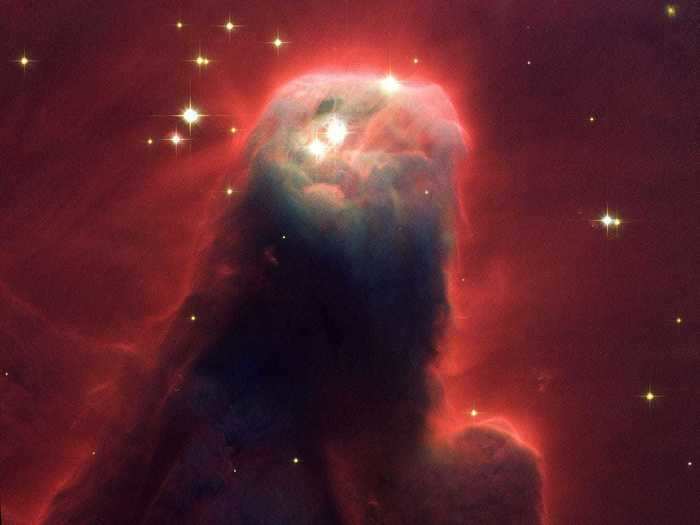
Ultraviolet radiation causes the red glow around the Cone Nebula.
Galaxy NGC 1015 is classified as a barred spiral galaxy, just like the Milky Way.
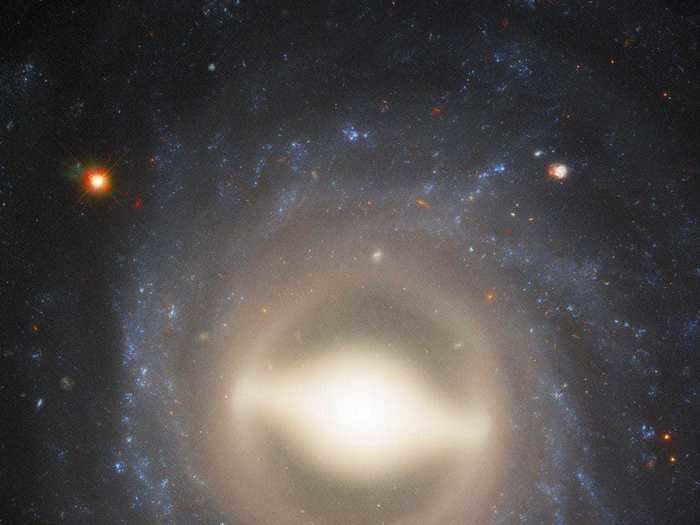
Galaxy NGC 1015 is 118 million light-years from Earth.
The Red Spider Nebula sits in the constellation of Sagittarius.
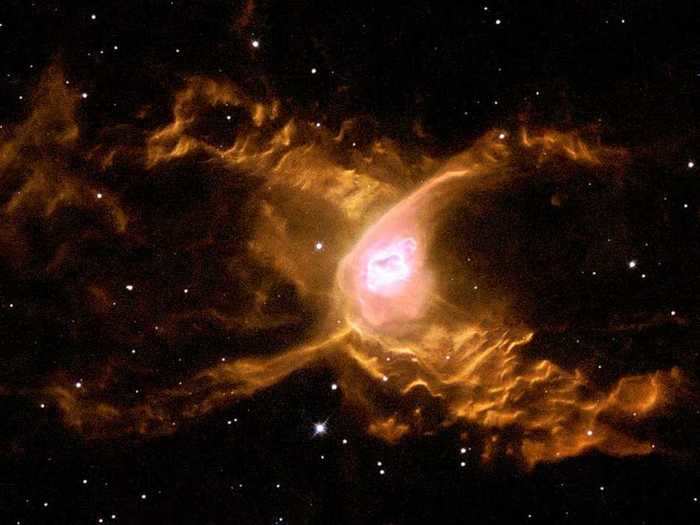
According to NASA, this nebula is home to some of the universe's hottest stars.
The Lagoon Nebula is about 4,000 light-years away.
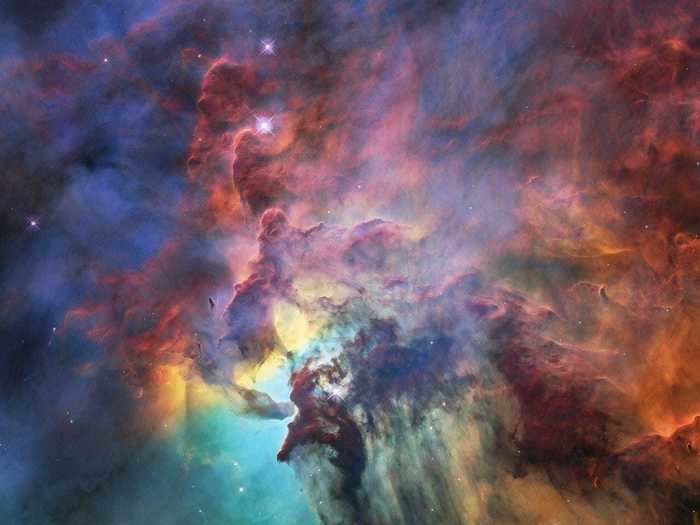
The nebula is a massive 55 light-years wide and 20 light-years tall.
The Sombrero Galaxy is located 28 million light-years away.
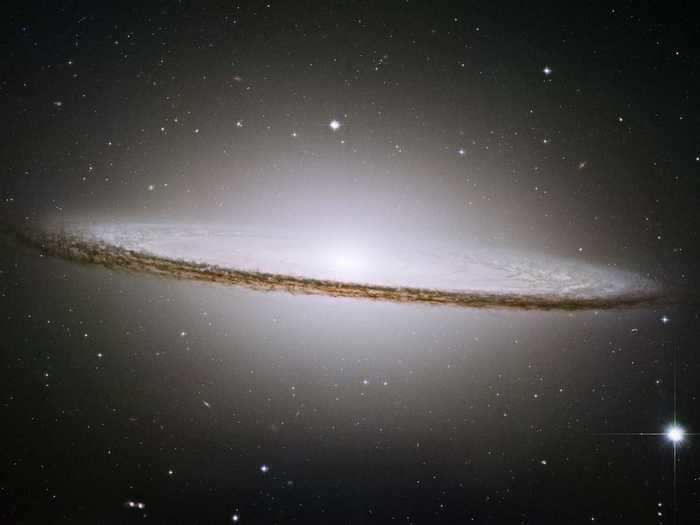
The mass of The Sombrero Galaxy is equal to 800 billion suns.
This star-forming cluster can be found in the Large Magellanic Cloud in N44, an emission nebula with a superbubble structure.
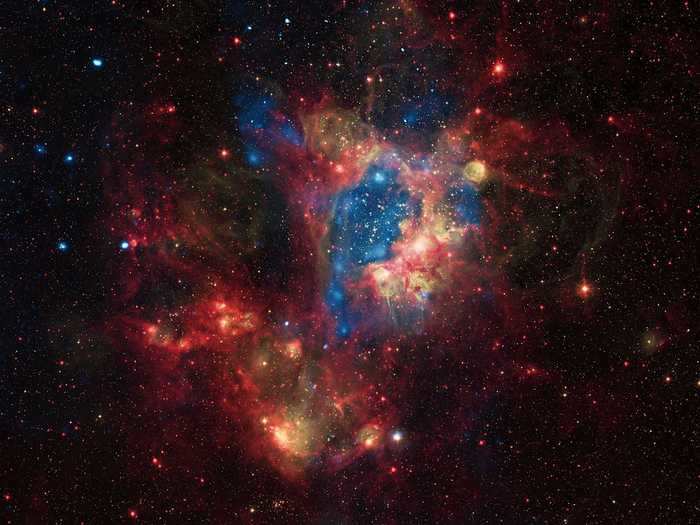
The cluster is about located 160,000 light-years from Earth, according to Science Source.
These elephant trunks are known as the Pillars of Creation and are part of an active region of star formation in the Milky Way.
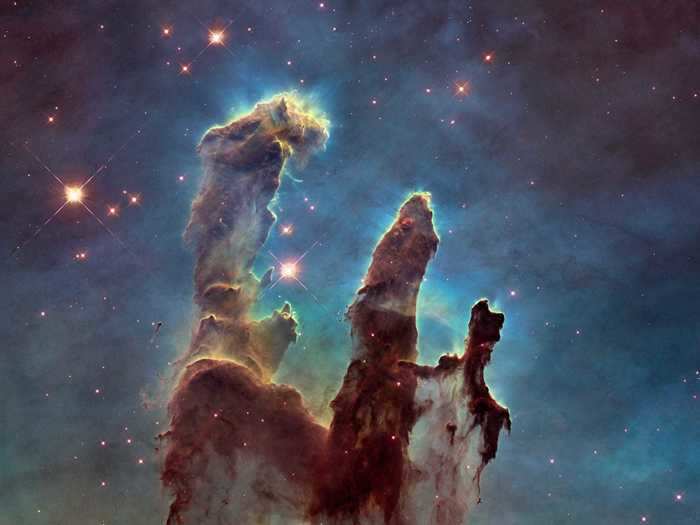
The pillars are made of up gas and cosmic dust.
As its name implies, Stephan's Quintet is a compact group of five galaxies in the Pegasus constellation.
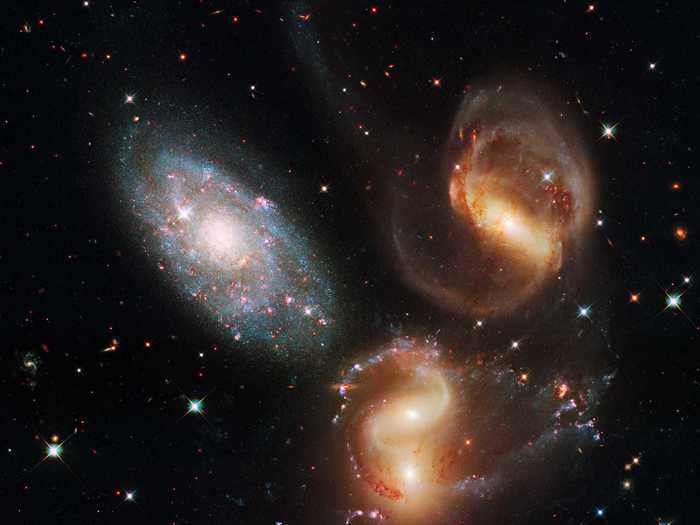
Source: NASA
The colorful Cassiopeia A is a supernova remnant in the Cassiopeia constellation.
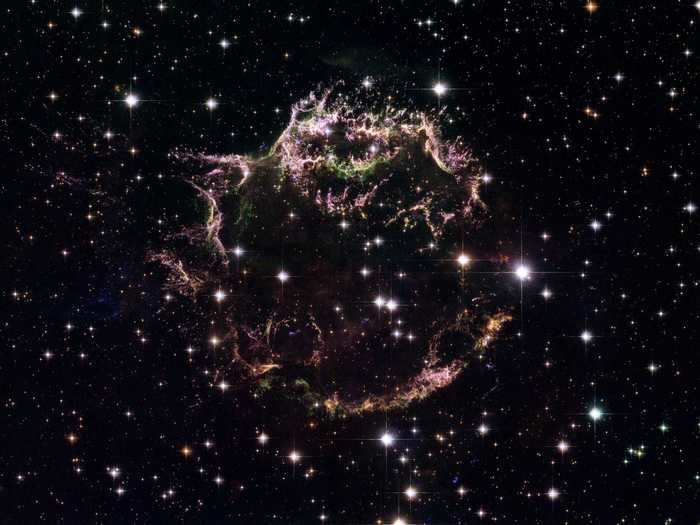
Source: Britannica
This grouping of stars is one of the most massive young star clusters in the Milky Way Galaxy.
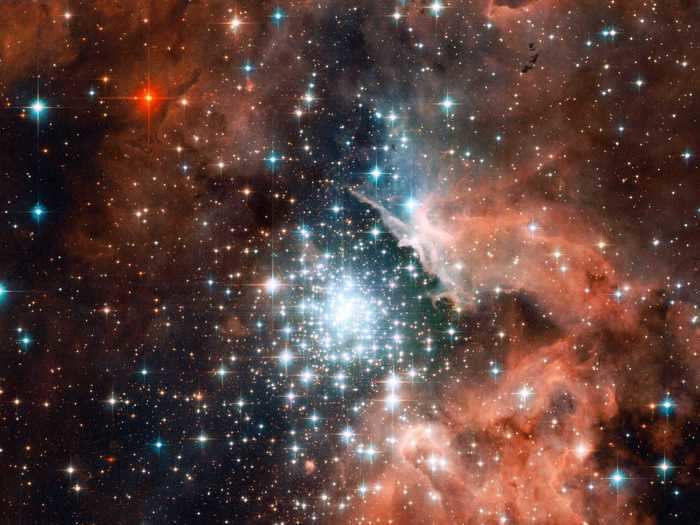
Source: NASA
The Butterfly Nebula is a planetary nebula in the Scorpius constellation that contains one of the hottest known stars in the Milky Way.
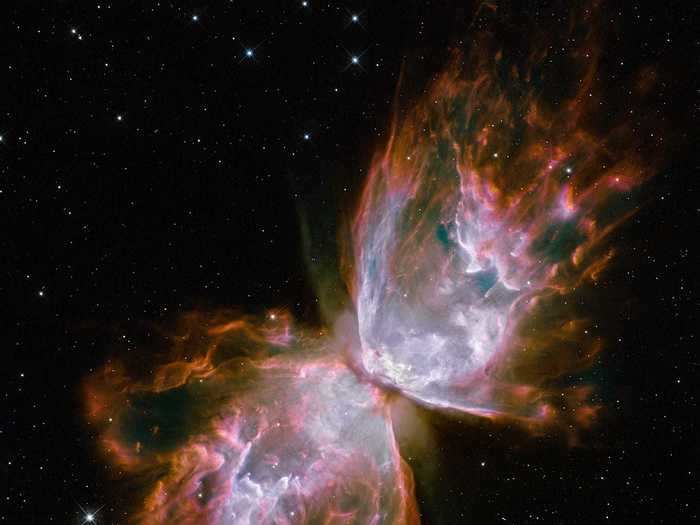
With an estimated temperature of about 250,000 degrees Celsius, the dying star at the center of this nebula used to be five times the mass of the sun, according to NASA.
Also known as Barnard 33, the Horsehead Nebula is a dark nebula located in the Orion constellation.
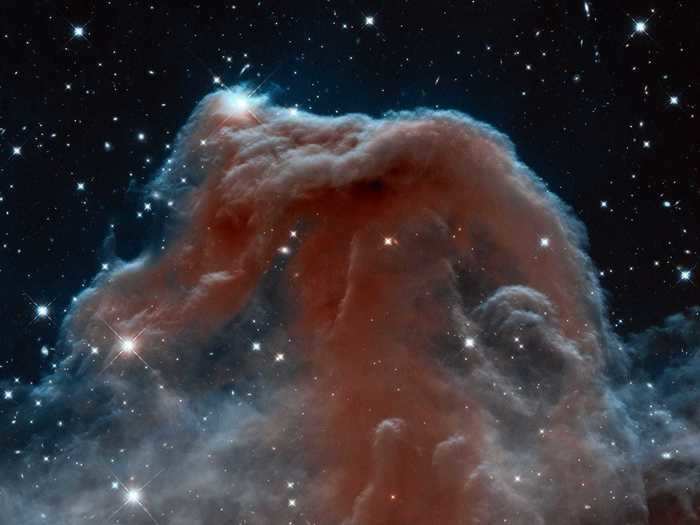
The Cat's Eye Nebula is a planetary nebula located 3,000 light-years away from Earth.
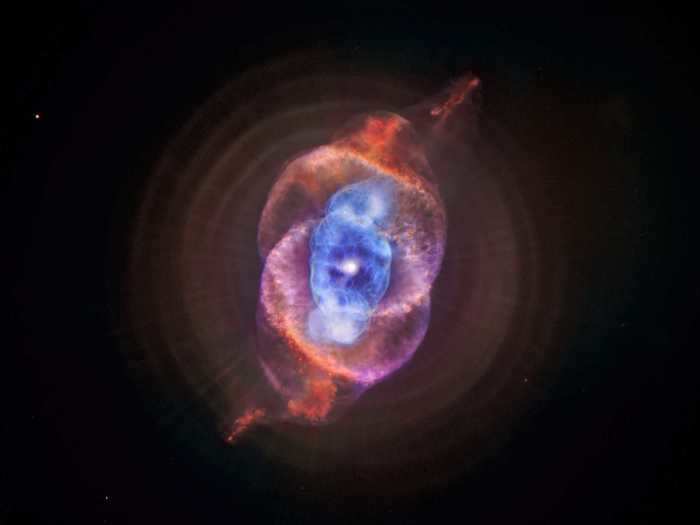
A planetary nebula is an expanding, ring-shaped cloud of gas that forms around an aging star. Several billion years from now, the sun will experience this phase of stellar evolution.
The Tarantula Nebula is a star-forming region located in the Large Magellanic Cloud, a dwarf galaxy bound to the Milky Way.
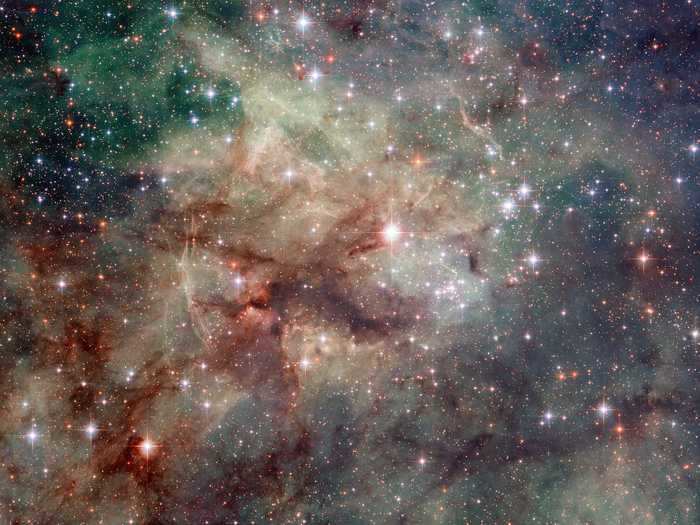
R136, which is in The Tarantula Nebula, is a starburst region where stars are formed at a rate higher than the rest of the galaxy, according to NASA.
These merging spiral galaxies have been the site of three supernova explosions within the last 21 years.
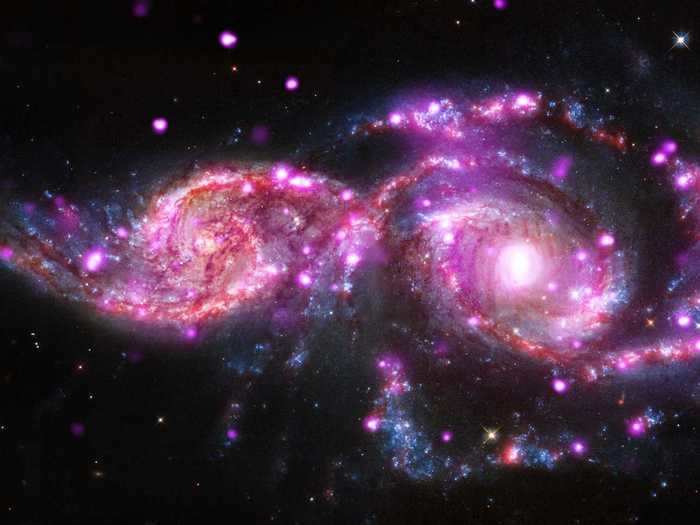
Source: NASA
Located 6,500 light-years from Earth, the Crab Nebula is widely accepted to be a supernova remnant from 1054 A.D.
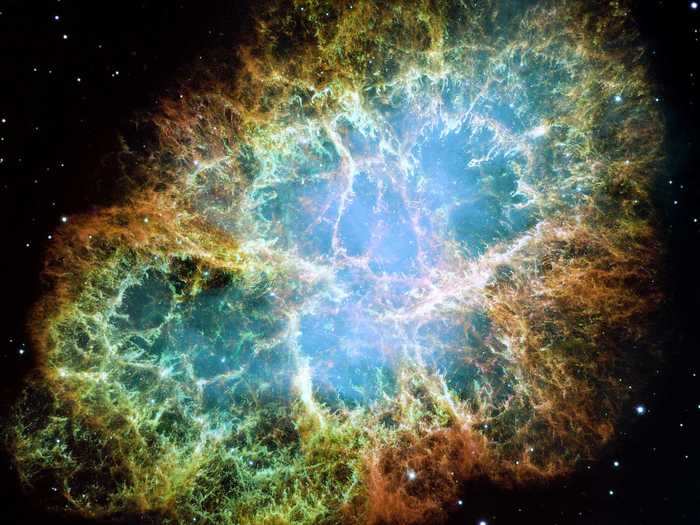
Source: NASA/ESA Hubble Space Telescope
These two supermassive black holes began merging around 30 million years ago.
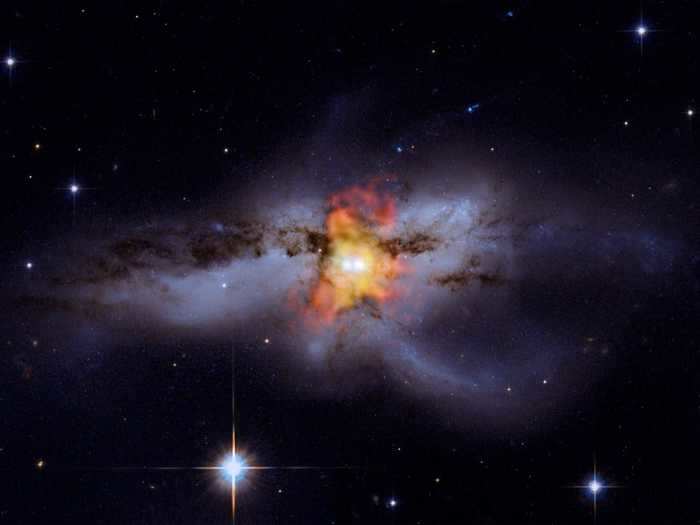
NASA scientists believe that the black holes are spiraling toward each other, which likely began about 30 million years ago. If the black holes collide, it's likely they will form one large black hole, but this is tens (if not hundreds) of millions of years away from today.
This is a star-forming region in the Cygnus, or The Swan, constellation.
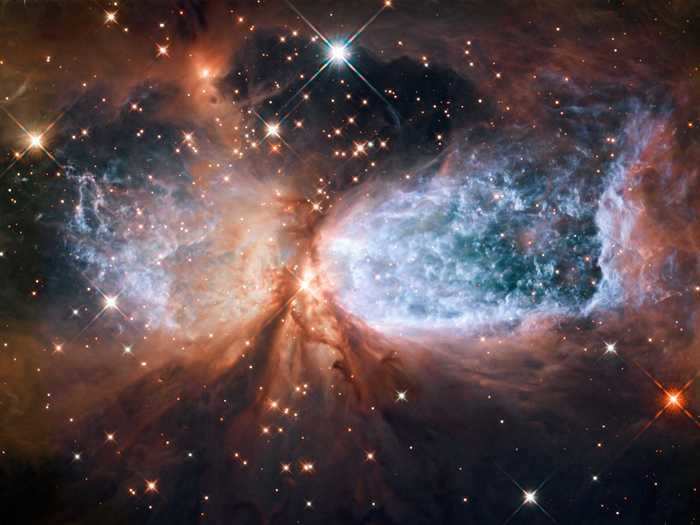
Source: Hubble Space Telescope
The Veil Nebula is the remnant of a supernova explosion that occurred around 8,000 years ago.
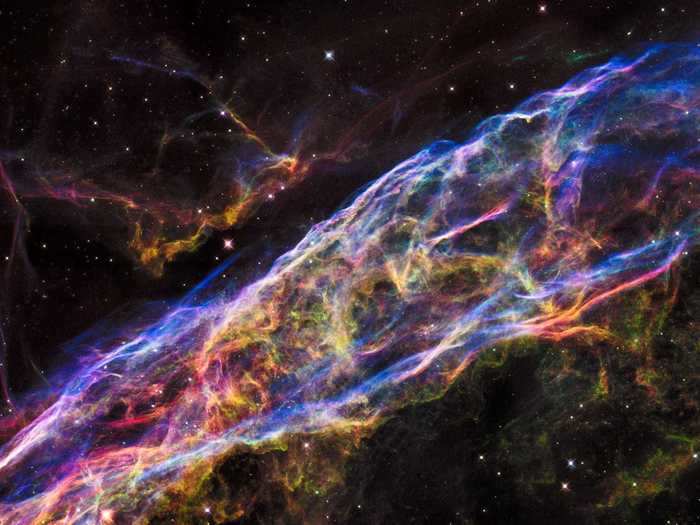
In simplest terms, a supernova is a bright, powerful explosion of a dying massive star.
Both of these spiral galaxies are located 55 million light-years away from Earth in the Virgo Cluster.
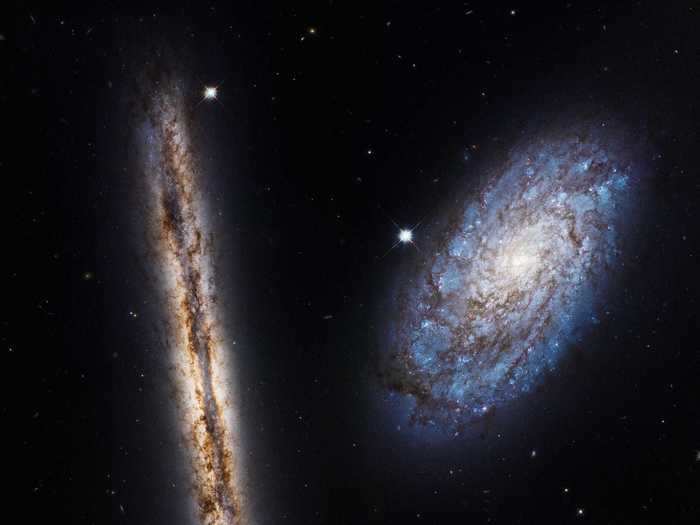
The reason the two galaxies look so different is due to the viewer's angle. In reality, the shapes are very similar.
The picturesque Whirlpool Galaxy has been gliding past the smaller galaxy on the left for hundreds of millions of years.
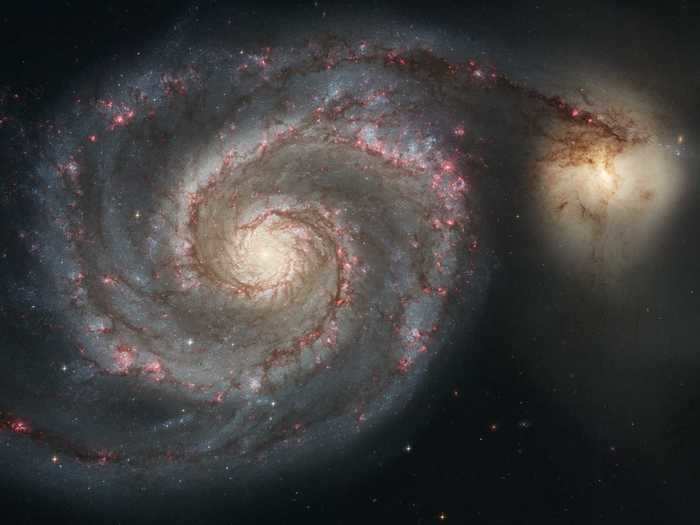
According to NASA, the "arms" of the galaxy are where stars are formed.
The Westerlund 2 star cluster is estimated to be about one or two million years old.
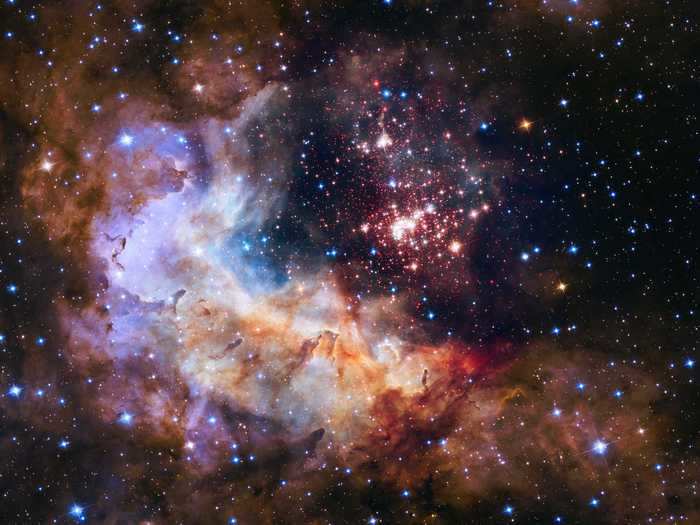
This star clustered is considered young and is located about 20,000 light-years from Earth, according to NASA.
This pillar residing in the Carina Nebula is located 7,500 light-years away from Earth.
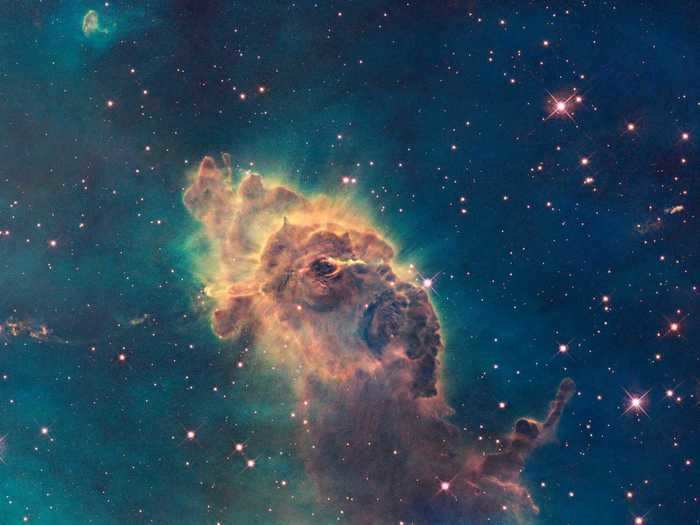
More formally known as cold molecular pillars, an elephant trunk is a term used to describe formations of interstellar matter in space. Interstellar matter is mostly made of gas and dust.
NGC 602 is an open cluster located in the Small Magellanic Cloud, one of the closest galaxies to the Milky Way.
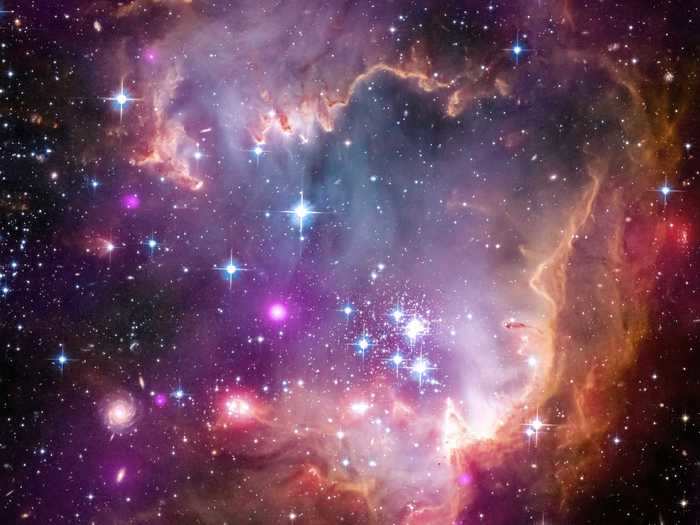
The stars in this cluster formed at different times and some date as far back as 60 million years ago, according to NASA.
The largest planet in our solar system, Jupiter, has a trademark Great Red Spot that is roughly as wide as Earth.
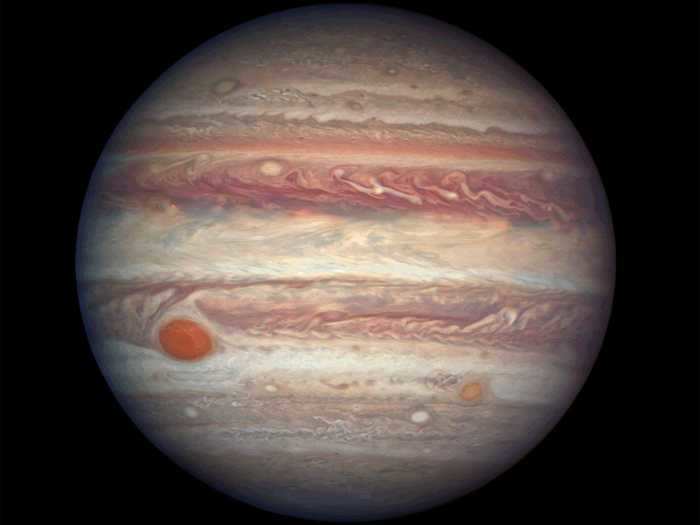
The spot is an anti-cyclonic storm that has lasted centuries.
The Antennae Galaxies are currently going through a starburst phase in which clouds of gas and dust collide and cause rapid star formation.
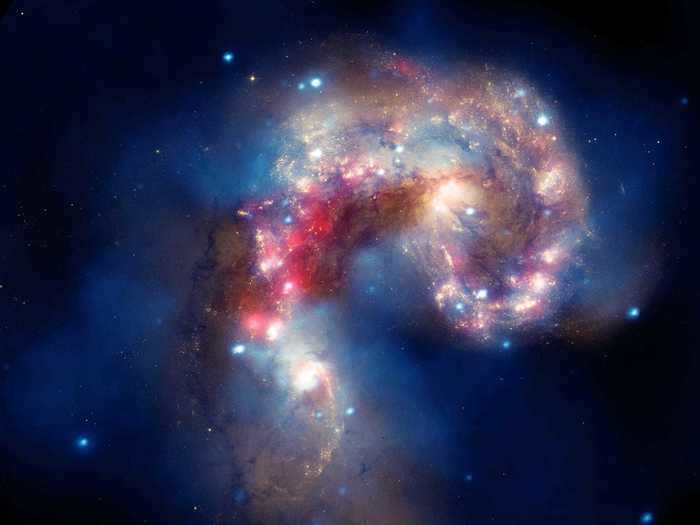
During the galaxies' collision, billions of stars will be formed, according to NASA.
The rose-like shape of the larger of the two galaxies is caused by the gravitational pull of the one below it.
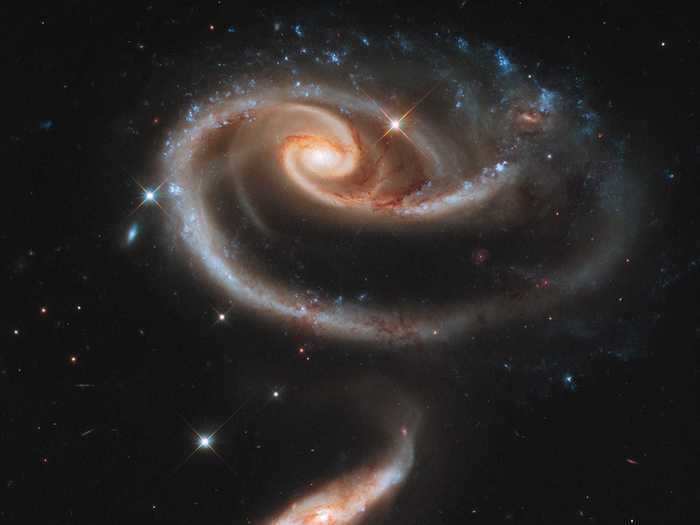
The larger galaxy's mass is about five times larger than the smaller galaxy, according to NASA.
Located in the Scorpius constellation, the open cluster Pismis 24 is home to several massive stars.
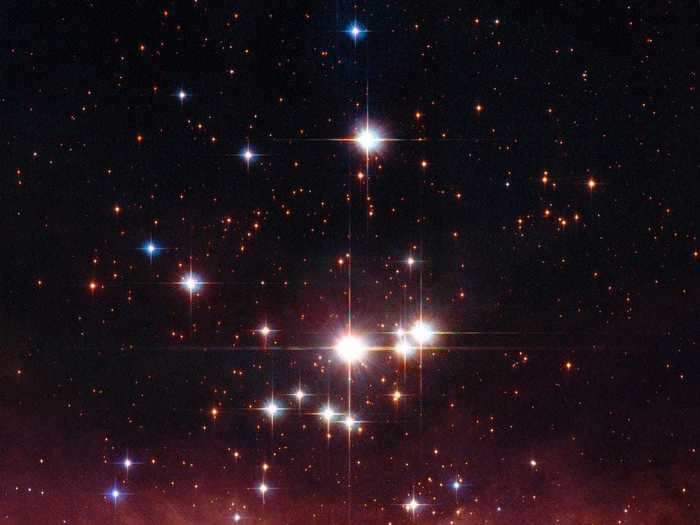
An open cluster is a group of stars — often a few hundred or thousand — that are held together by mutual gravitation.
The giant nebula NGC 2014 and its neighbor, NGC 2020, form a "star nursery" where stars are created.
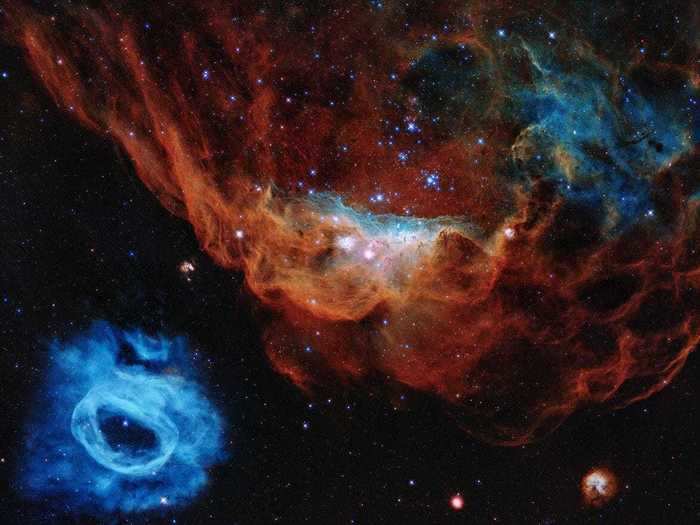
The two nebulae are an estimated 163,000 light-years away.
The Lobster Nebula is a giant cloud of dust and gas located about 5,500 light-years from Earth.
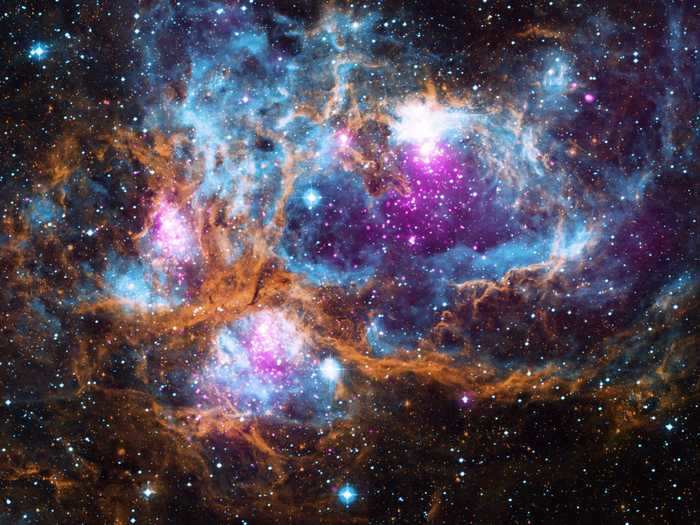
Nebulae are giant clouds of dust and gas, and they often form stars. According to NASA's Astronomy Picture of the Day, the Lobster Nebula is forming some of the brightest and most massive stars.
The center of our Milky Way galaxy contains a supermassive black hole called Sagittarius A* — the bright white spot on the right side of this photo.
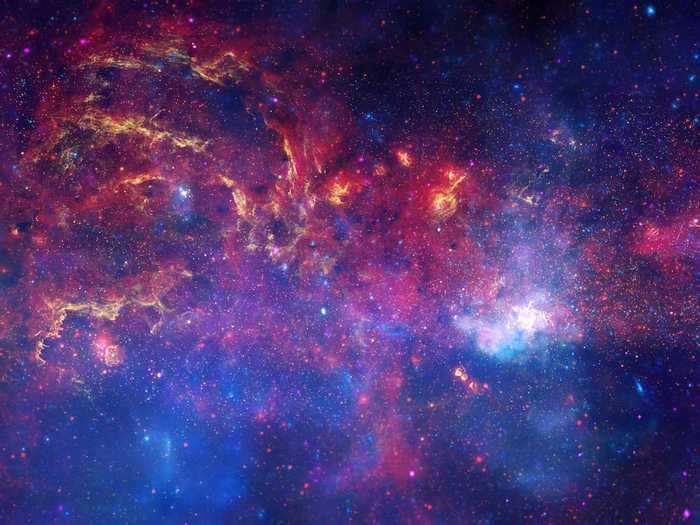
Source: NASA
The Bubble Nebula is an emission nebula located 8,000 light-years away from Earth.
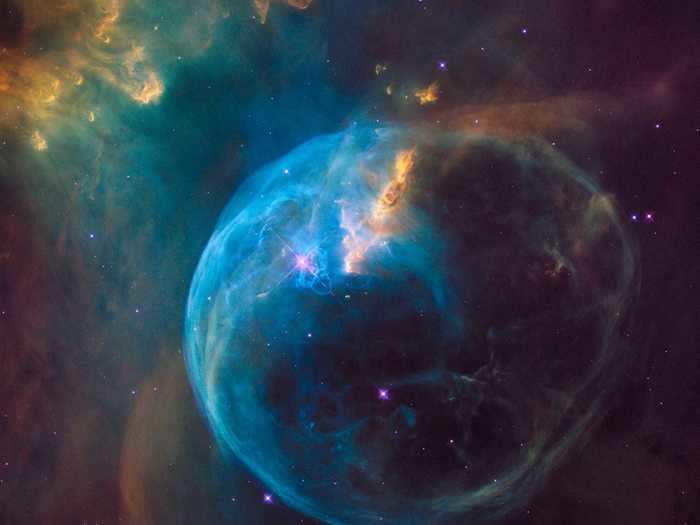
Light-years is a term often heard when discussing space. A light-year is a measurement for how far something is. One light-year is the equivalent of 6 trillion miles.
READ MORE ARTICLES ON
Popular Right Now
Popular Keywords
Advertisement